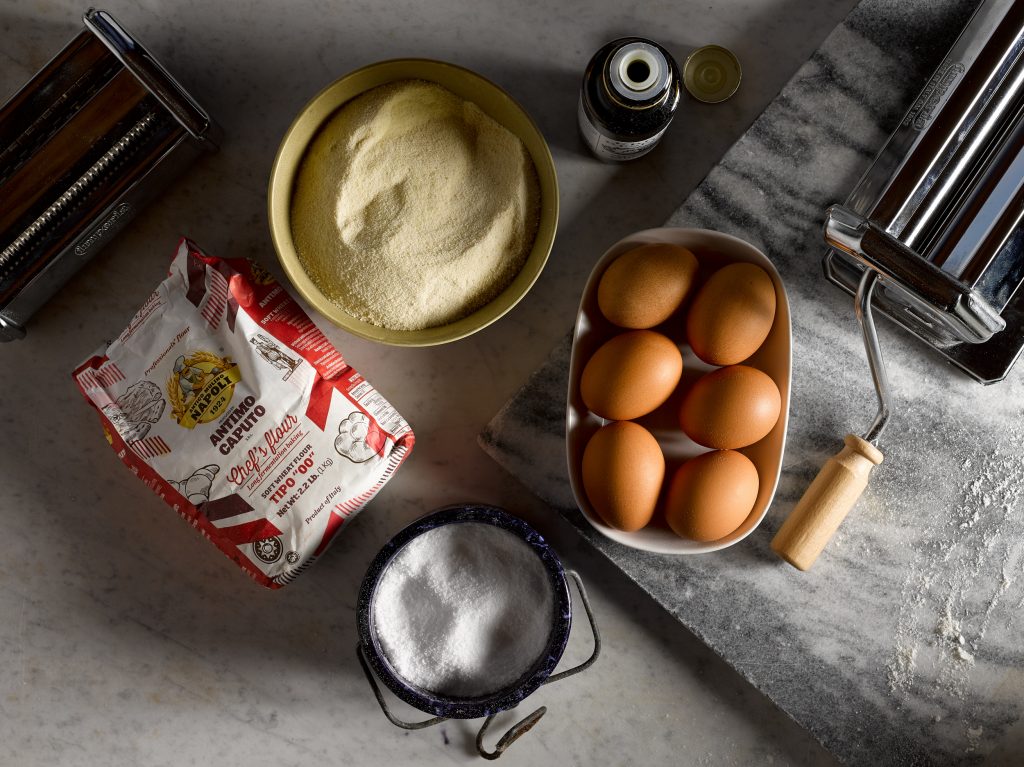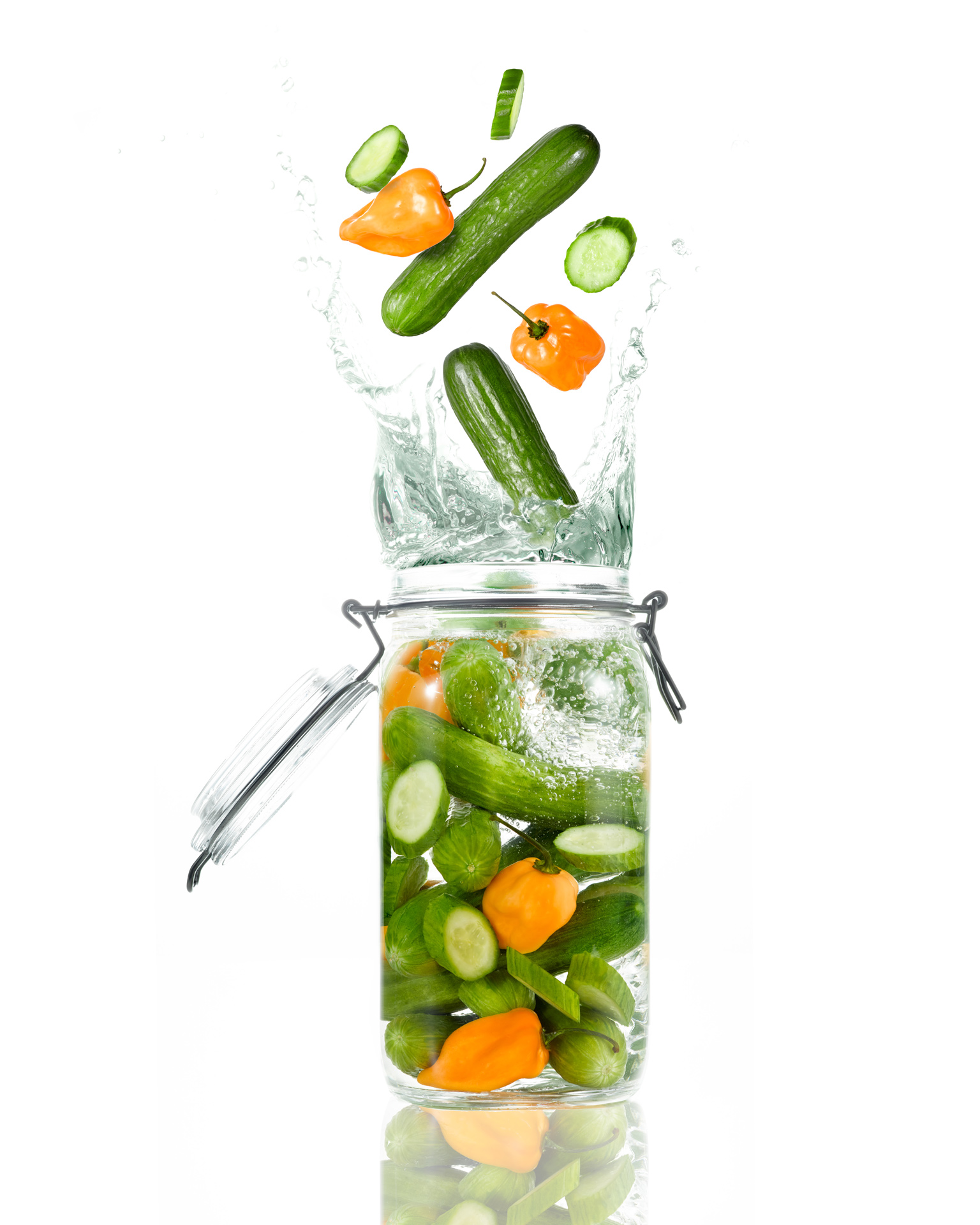As our world gets a little smaller and with social distancing transitioning into an official “stay at home” order from our local government, we are making the most of the food that we have in our pantry and refrigerator. Our plan is to work our way through the perishable items first so as not to waste anything. I would like to document our stay-at-home diet as much as possible but I’ve set a couple rules for myself: I will only photograph something if I can do it in a manner that keeps it edible and enjoyable, and I won’t make extra portions (or include flavor cues) if that means wasting food.
I think it’s irresponsible to waste food at this critical time: any food that I don’t eat for the sake of my photo is food that I removed from the general pool which someone else could have eaten. Further, the anxiety of our situation is always nagging at the back of my mind. At least once a day I’m imagining some sort of extreme food scarcity where I’m cooking tablespoons of rice over a candle and hiding dried beans in the floorboards from roving hoards of brigands.
After Thursday’s shoot, my food stylist and I divided up the remaining edible food from the shoot to bring home since we don’t know when we’ll be back in the studio. One of the things I grabbed was a pre-packaged beef with au jus thing which is the type of ready-to-heat meal I don’t usually buy. But we are in a no-waste world now! It is basically pre-cooked beef roast with some sort of brown sauce that heats up in the microwave in a few minutes. I tasted it as-is and it was … fine. Basically what you’d expect. However, I had other plans.
Following package instructions for stovetop preparation, I heated up the beef and sauce, but then I added a can of tomato paste, a cup or so of leftover red wine, and a generous pinch of dried oregano. I heated up the whole mess, added a little salt to round out the flavor, let it reduce for a few minutes, and then finished it off with a pat of butter. I threw my pasta into salted boiling water for about three minutes, and when it was ready I used tongs to slop it into my pan sauce without draining, making sure to drag some of the pasta cooking water in to loosen up the sauce. Finally I tossed the pasta until coated, heating for just a minute or two more.
To serve I put my beef sauce pasta concoction into bowls and topped each with a generous handful of grated parmesan, a handful of chopped parsley (also leftover from a shoot), and then finished each bowl off with a drizzle of extra virgin olive oil and some flaky salt. IT WAS AMAZING.
And I didn’t photograph it.
Because I didn’t want to waste this amazing dish. And I’d had a couple cocktails by that point in the evening so I was motivated more by hunger than photography. But trust me, it was beautiful and delicious.
However, I did photograph the pasta that I made. My wife gave me a pasta maker many years ago, and when we moved into our current loft 9 years ago it got put in the back of a cupboard and I’m pretty sure it hasn’t moved since move-in day. I know for sure that I made pasta sometime in early 2011 before we moved but I don’t think the maker has been out of the box since then. Turns out I hadn’t lost the knack though. With a refresher in the process and using the recipe at Leite’s Culinaria as a starting point I made my dough using 50/50 blend of Tipo 00 flour and semolina flour, a generous pinch of kosher salt, a glug of olive oil, and six eggs. I have Tipo 00 flour on hand for my pizza dough, and the semolina on hand from a coconut cake recipe.

This was twice as much pastas as we needed, so half of it went straight into the freezer because, you know, no waste allowed. I portioned it out into a couple of two-serving sized containers for easy cooking in the future.
Pasta dough is easy, scaleable, and uses basic pantry ingredients. Perfect for stay at home situations. This recipe can be used for all types of pasta shapes.If you don’t have Tipo 00 flour or semolina, you can use all purpose flour, but you’ll have to experiment a little with the number of eggs you need. I used one egg for each half cup of flour mixture – your mileage may vary.
Stay safe everyone.
Homemade Pasta Dough Recipe

Useful recipe for all types of pasta shapes
- ¾ cup Tipo 00 flour ((or all-purpose))
- ¾ cup semolina flour ((or all-purpose))
- 1 tsp kosher salt
- 3 eggs
- 1 tsp olive oil
Mix the flours and salt in a bowl and combine thoroughly. Dump mixture onto a board or countertop.
Form a well in the middle of the pile and crack the eggs into the well, then add the olive oil.
Using your fingers or a fork beat the eggs and oil together, then begin to incorporate the flour, a little at at time. Once the dough starts to come together, form a ball and then knead for several minutes until smooth. Wrap tightly in plastic wrap and refridgerate for an hour or overnight.
When ready to make pasta, remove the dough from the fridge. Roll the dough out using either a machine or by hand and shape into the pasta shape that you desire. You may have to do it in parts, if so keep the unused part tightly wrapped in plastic so it doesn't dry out.
Cook fresh pasta in salted boiling water for 2-4 minutes depending on the size and shape of your finished pasta. It cooks very fast so start checking after 2 minutes. You want to stop cooking when it has a nice chewy al dente texture.
Pasta dough is easily scalable, following the metric of 3/4 cup of flour per entrée sized portion. With my particular flour combination one egg per half cup of flour made for a perfect dough. Keep in mind that different types of flour and different brands may have different levels of moisture absorption so you’ll have to play with it. If your dough comes together before you’ve incorporated all the flour, then you’re done! Or add another egg. Your call!
This recipe is loosely based on the one found at Leite’s Culinaria. There is a lot of other cool information there including how to color your pasta, so check it out for further reading.


No Comments